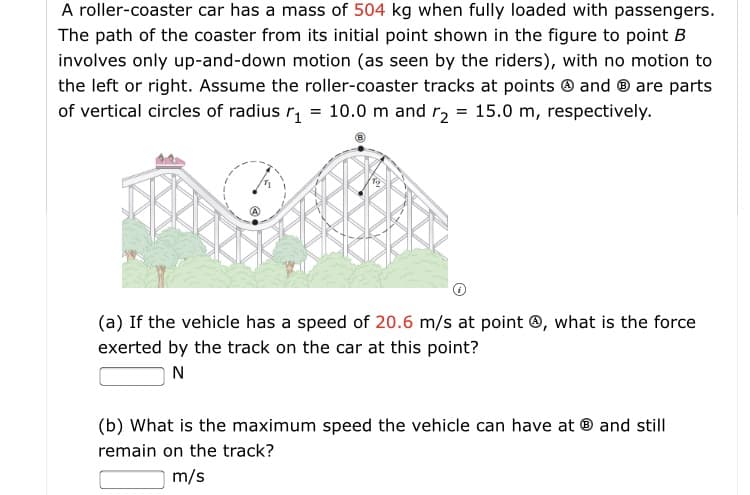A roller-coaster car has a mass of 504 kg when fully loaded with passengers. The path of the coaster from its initial point shown in the figure to point B involves only up-and-down motion (as seen by the riders), with no motion to the left or right. Assume the roller-coaster tracks at points ® and ® are parts of vertical circles of radius r, = 10.0 m and r2 = 15.0 m, respectively. (a) If the vehicle has a speed of 20.6 m/s at point ©, what is the force exerted by the track on the car at this point? N (b) What is the maximum speed the vehicle can have at ® and still remain on the track? m/s
Gravitational force
In nature, every object is attracted by every other object. This phenomenon is called gravity. The force associated with gravity is called gravitational force. The gravitational force is the weakest force that exists in nature. The gravitational force is always attractive.
Acceleration Due to Gravity
In fundamental physics, gravity or gravitational force is the universal attractive force acting between all the matters that exist or exhibit. It is the weakest known force. Therefore no internal changes in an object occurs due to this force. On the other hand, it has control over the trajectories of bodies in the solar system and in the universe due to its vast scope and universal action. The free fall of objects on Earth and the motions of celestial bodies, according to Newton, are both determined by the same force. It was Newton who put forward that the moon is held by a strong attractive force exerted by the Earth which makes it revolve in a straight line. He was sure that this force is similar to the downward force which Earth exerts on all the objects on it.

Trending now
This is a popular solution!
Step by step
Solved in 2 steps with 2 images


